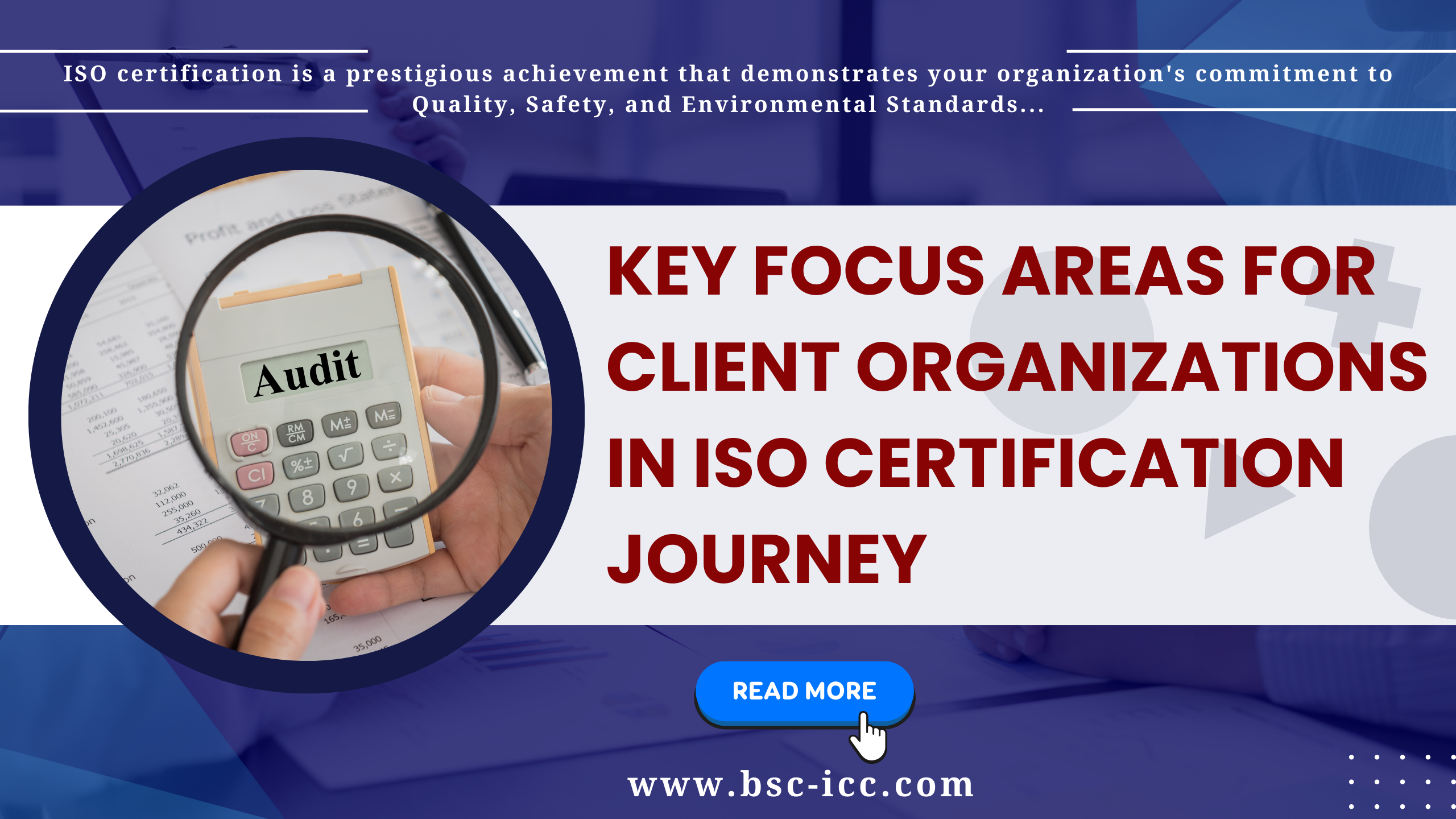
Key Focus Areas for Client Organizations in ISO Certification Journey
ISO certification is a prestigious achievement that demonstrates your organization's commitment to quality, safety, and environmental standards. However, before you can proudly display the ISO logo, you must pass an ISO audit. This process can be intimidating, but with the right approach, you can ensure a successful ISO audit. In this blog, we'll make you aware about the necessary steps to be followed in order to get ISO Certified.
1. Understand the ISO Standards: The first step is to thoroughly understand the specific ISO standard you are aiming for, whether it's ISO 9001 (quality management), ISO 14001 (environmental management), or any other. Study the requirements of specific standard, objectives, and principles to align your organization with them.
2. Document Your Processes: Clear documentation of your processes, procedures, and policies is crucial. This transparency helps auditors assess your compliance with ISO standards. Ensure that your documentation is up-to-date, accessible, and well-organized.
3. Conduct Internal Audits: Regular internal audits serve as a self-assessment tool. They help you identify areas of non-compliance and correct them before the external audit. This proactive approach reduces the chances of findings during the official audit.
4. Employee Training and Awareness: All employees should be aware of the ISO standards and their role in compliance. Conduct training sessions to ensure that everyone understands the standards and their responsibilities.
5. Select Competent Auditors: Choose experienced and certified auditors to conduct the ISO audit. Their expertise can make a significant difference in the audit process.
6. Pre-Audit Preparation: Before the audit, conduct a pre-audit to identify any potential issues or areas of concern. Address these issues in advance to minimize audit findings.
7. Stay Organized During the Audit: During the audit, maintain an organized and cooperative approach. Provide auditors with easy access to documents and records. Be responsive to their inquiries and requests.
8. Corrective Actions: If a finding/ Gap/ Area of Improvement is identified by auditor, promptly implement corrective actions and inform the auditors. A proactive response demonstrates your commitment to continuous improvement.
9. Review and Learn: After the audit, conduct a review of the process and findings. Use this as an opportunity to learn and improve your systems.
10. Continuous Improvement: ISO certification is not a one-time achievement. Commit to ongoing compliance and continuous improvement to maintain your certification.
In summary, a successful ISO audit requires careful preparation, adherence to standards, and a commitment to ongoing improvement. By following these steps, your organization can navigate the audit process with confidence and achieve ISO certification. Remember that ISO certification is not just a badge; it's a commitment to excellence and customer satisfaction.
